
Congregation of Marian Fathers
Encyclopedia
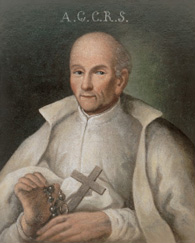 |
The Congregation of Marian Fathers of the Immaculate Conception of the Most Blessed Virgin Mary (Lat., Congregatio Clericorum Marianorum ab Immaculata Conceptionis Beatissimae Virginis Mariae, abbrev. MIC) is a Roman Catholic male clerical
Clergy
Clergy is the generic term used to describe the formal religious leadership within a given religion. A clergyman, churchman or cleric is a member of the clergy, especially one who is a priest, preacher, pastor, or other religious professional....
religious congregation founded, 1673, in Poland. It is also known as Marians of the Immaculate Conception.
The Congregation of about 500 priests and brothers has houses in 19 countries on 6 continents. Marians pledge support to the pope and follow the official teachings of the Catholic Church and aim to spread devotion to Blessed Virgin Mary as the Immaculate Conception
Immaculate Conception
The Immaculate Conception of Mary is a dogma of the Roman Catholic Church, according to which the Virgin Mary was conceived without any stain of original sin. It is one of the four dogmata in Roman Catholic Mariology...
, pray for the souls in purgatory
Purgatory
Purgatory is the condition or process of purification or temporary punishment in which, it is believed, the souls of those who die in a state of grace are made ready for Heaven...
and undertake a variety of apostolic work.
Marians were the first Catholic men’s religious order dedicated to the honor of Mary’s Immaculate Conception. The community traces its roots to Blessed Stanislaus of Jesus and Mary Papczyński
Stanislaus Papczynski
Blessed Stanislaus of Jesus and Mary Papczyński , a priest of the Roman Catholic church, a member of the Piarist Order, the founder of the Congregation of Marian Fathers; beatified by the Roman Catholic Church in 2007. Son of Tomasz Papka—a blacksmith—and Zofia née Tacikowska...
who was beatified in Lichen
Lichen
Lichens are composite organisms consisting of a symbiotic organism composed of a fungus with a photosynthetic partner , usually either a green alga or cyanobacterium...
, Poland in 2007. They are an Institute of Consecrated Life
Institute of Consecrated Life
Institutes of consecrated life are canonically erected institutes in the Roman Catholic Church whose members profess the evangelical counsels of chastity, poverty, and obedience by vows or other sacred bonds...
and their motto is Pro Christo et Ecclessia. Marians are also Official promoters of the authentic Divine Mercy message since 1941.
History
The Congregation was formed by Blessed Stanislaus Papczyński in 1673 in Puszcza Korabiewska (today known as Puszcza Marianska/Marian Forest) near Skierniewice, Poland. He began to establish the Congregation with a small group of companions. Their shared life was based on the Rule of Life, written by Bl. Stanislaus. He tempered his plans at first to establish a community active in the Church's service. At the beginning, the Marian Fathers lived an eremitical rule of life as they pursued final recognition and approval by the Church. Within a short time, the new and still small Order received approval from their local Ordinary, Bishop Stephen Wierzbowski of Poznan.Pope Innocent XII granted his approval for the young Order in 1699 with solemn vows under the French Rule of the Ten Virtues of the Blessed Virgin Mary, initially placing them within the Franciscans.
With the death of the Founder in 1701, however, the Marian Fathers found themselves in a critical period of transition. Internal factions divided the membership into one group favoring a strictly contemplative life, and a second group seeking to add missionary and pastoral outreach to the Order's contemplative spirit. The period known as the "Rostkowski Dispersion" followed, fired by internal conflict, as well as the negative attitude expressed by some bishops and lay dignitaries. In 1716, Bishop Adam Rostkowski decided to close the Marian novitiate, instructing Marians to leave the monastery and move out to assume pastoral work in parishes.
In 1722, Bishop John Tarlo of Poznan called the scattered Marians back to their monasteries, and convened a general chapter. The man elected to serve as Superior General was Fr. Andrew of St. Matthew Deszpot, a Czech originally received into the Order by the founder Bl. Stanislaus. At the same chapter, a General Procurator was chosen, Fr. Joachim of St. Ann Kozłowski. He was given the mission of going to Rome to have the Order's constitutions confirmed, and to remove the Order from the jurisdiction of local bishops. In 1723, Pope Innocent XIII approved the Marian statutes and released the Order from the interference of local bishops.
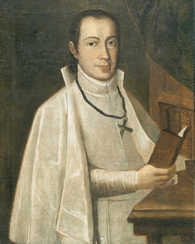
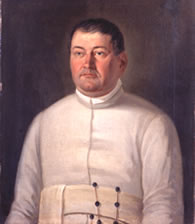
Rapid changes in the European political situation by the end of the 18th and through 19th century led to the near destruction of the Order.
With the complete failure of the Kosciuszko Uprising
Kosciuszko Uprising
The Kościuszko Uprising was an uprising against Imperial Russia and the Kingdom of Prussia led by Tadeusz Kościuszko in Poland, Belarus and Lithuania in 1794...
in 1795, Poland lost its independence. Now the Marian Fathers found themselves divided by virtually sealed borders. The partitioning of the Polish Republic was decreed by the occupying armies of Russia, Prussia, and Austria.
Again, in 1798, after Napoleon seized Rome, he mandated that all foreigners be expelled from its borders. The exodus included the Marian Fathers removed from their monastery and Rome's St. Vitus Church.
In 1834, the Portuguese government became hostile toward all religious, and finally closed all Marian monasteries in that nation.
In Eastern Europe following the Vienna Congress
Congress of Vienna
The Congress of Vienna was a conference of ambassadors of European states chaired by Klemens Wenzel von Metternich, and held in Vienna from September, 1814 to June, 1815. The objective of the Congress was to settle the many issues arising from the French Revolutionary Wars, the Napoleonic Wars,...
of 1815, most of the Marian monasteries found themselves in the newly created Polish Kingdom, a kingdom which was part of Imperial Russia, whose Czarist regime was openly hostile to the Catholic Church.
The defeat of two Polish national uprisings against Czarist Russia, one in November of 1830, and another in January of 1863, meant repression for religious orders in Poland. The Czarist regime prohibited the acceptance of new candidates to the religious life, effectively stamping out the normal process of growth in vocations to the religious life for the Marian Fathers and other orders.
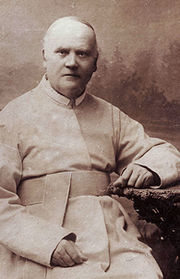
Marijampole
Marijampolė is an industrial city and the capital of the Marijampolė County in the south of Lithuania, bordering Poland and Russian Kaliningrad oblast, and Lake Vištytis. The population of Marijampolė is 48,700...
, Lithuania. All Marians were sent to Marijampole. Such rulings were nothing less than a death sentence for the religious order. By the year 1904, that last Marian house closed, since so few Marians remained. By 1908, only one Marian remained, Vincent Sękowski (Senkus). He was the last Superior General. All other Marians had died, or asked to leave to join the ranks of the diocesan clergy. For all appearances, the Czarist persecutions had succeeded. The Marian Fathers seemed to have come to the end of the line.
At this critical moment in the history of the Marian Order, an ardent and energetic Lithuanian priest came to visit Fr. Vincent Sękowski, with the aim of secretly renewing the Order. He was Fr. George Matulaitis-Matulewicz
Jurgis Matulaitis-Matulevicius
Jurgis [George] Matulaitis was a Roman Catholic Bishop of Vilnius from 1918 to 1925 and founder of the Sisters of the Immaculate Conception of the Blessed Virgin Mary. On 28 June 1987, Pope John Paul II beatified him as the Blessed Jurgis Matulaitis-Matulewicz.-Biography:Matulaitis was the son of...
, and at that time he was a professor at the Academy of Theology in St. Petersburg, Russia. Fr. Matulaitis had a profound understanding of the contributions and significance of religious life to society, although Catholic monasteries were being suppressed at that time. He believed it was important to do whatever needed to be done to revive religious life in the lands dominated by Czarist Russia.
As a youth, he had been brought up in a village where the Marian Fathers staffed the local parish. The experience had left him with a lifelong respect and admiration for the Marian Fathers. And so Fr. George, along with his friend Fr. Francis-Peter Bucys who had also grown up with Marian religious influence, entered the Marian Order with the intention of saving it from disappearing into history, along with all its promise for God's work. They had to become Marians in secret in order to thwart Czarist Russian authorities who continued to persecute the Church.
Fr. George made his vows and was accepted into the Marian Order by Fr. Vincent Sękowski, and in the same year, 1909, Fr. Francis Peter Bucys became the first novice of the Order on its way to renewed life.
Fr. George wrote the renewed Order's constitutions, inspired by the spirit of Bl. Stanislaus Papczyński and the desire to adapt his ideals to modern times. The new Constitutions and revived form of Marian life were approved by St. Pope Pius X in 1910. Fr. Vincent Sękowski, who was the last of the “White Marians”, lived on for five months after papal approval for Marian renewal.
To assure that the Order could continue to flourish without interference from the Czarist government, the secret Marian novitiate and house of studies were transferred from St. Petersburg in Russia to Fribourg in Switzerland. From this time on, the Marian Fathers began to experience consistent growth. In 1927, the year when the Renovator, then Archbishop George Matulaitis-Matulewicz, died, the Congregation had grown to around 300 members.
Fr. Francis P. Bucys succeeded Blessed George as the Superior General of the renovated Congregation. Thanks to the Renovator's reforms, the Marian Fathers became a modern religious congregation. Yet Blessed George Matulaitis did not change the main ideals of the religious community, such as spreading devotion to the Immaculate Conception of the Blessed Virgin Mary and supplication for the souls suffering in Purgatory. However, he did expand the field of the Marian apostolate and introduced significant changes into the Marian Fathers' way of life, adapting it to the new conditions and needs of modern times.
The 20th century
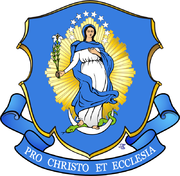
Sanctuary of Our Lady of Lichen
The Basilica of Our Lady of Licheń is a Roman Catholic church located in the village of Licheń Stary near Konin in the Greater Poland Voivodeship in Poland. It was designed by Barbara Bielecka and built between 1994 and 2004...
) and place a great deal of emphasis on spreading the messages of Divine Mercy
Divine Mercy
The Divine Mercy is a Roman Catholic devotion to the merciful love of God and the desire to let that love and mercy flow through one's own heart towards those in need of it...
of Saint Faustina Kowalska.
Between 1953 and 1986 the Marian Fathers operated a boarding school, Divine Mercy College, at Fawley Court
Fawley Court
Fawley Court is a country house standing on the banks of the River Thames at Fawley in the English county of Buckinghamshire, just north of Henley-on-Thames. The former deer park extended over the border into Oxfordshire...
near Henley-on-Thames
Henley-on-Thames
Henley-on-Thames is a town and civil parish on the River Thames in South Oxfordshire, England, about 10 miles downstream and north-east from Reading, 10 miles upstream and west from Maidenhead...
, Oxfordshire, England. Though intended for boys of Polish origin, in particular the children of the 100,000+ Poles who found exile in Britain after the Second World War, a significant proportion of the boys accepted were non-Poles.
In 1996 Fr. Seraphim Michalenko, MIC, and Fr. George Kosicki, CSB formed the John Paul II Institute of Divine Mercy to provide instruction in Divine Mercy theology and spirituality to both parish leaders and clergy. At its inception, Pope John Paul II
Pope John Paul II
Blessed Pope John Paul II , born Karol Józef Wojtyła , reigned as Pope of the Catholic Church and Sovereign of Vatican City from 16 October 1978 until his death on 2 April 2005, at of age. His was the second-longest documented pontificate, which lasted ; only Pope Pius IX ...
entrusted the Institute with the task of providing "formation and research in The Divine Mercy message". Their role in spreading the Divine Mercy message was acknowledged by Pope John Paul II in a special Papal Blessing in 2001, the 70th anniversary of the revelation of the Divine Mercy Message and Devotion.
The 21st century
The Marian Fathers in the United Kingdom have controversially sold the former school property Fawley CourtFawley Court
Fawley Court is a country house standing on the banks of the River Thames at Fawley in the English county of Buckinghamshire, just north of Henley-on-Thames. The former deer park extended over the border into Oxfordshire...
, despite protests from the Polish community. A group of Old Boys
Old Boys
The terms Old Boys and Old Girls are the usual expressions in use in the United Kingdom for former pupils or alumni of primary and secondary schools. While these are traditionally associated with independent schools, they are also used for some schools in the state sector...
from the school have challenged the sale on numerous grounds, including "violation of legislative guidelines, .. misapplied funds, ... harassment of the elderly, properties willed under duress from the infirm, human remains removed without authority or exhumation licence [and] irregular accounts submitted to the Charity Commission".
Statistics
- 2000 356 priests 548 male religious
- 2001 358 priests 542 male religious
- 2002 356 priests 539 male religious
- 2004 353 priests 510 male religious
- 2006 350 priests 517 male religious
- 2007 345 priests 506 male religious
- 2008 348 priests 492 male religious
Affiliated bishops
- Archmandrite Fabian Abrantowicz, M.I.C. †
- Francis Brazys, M.I.C. † (Priest: 19 December 1942 to 22 December 1964)
- Francis-Peter Bucys, M.I.C. † (Priest: 25 March 1899; Superior General: 27 July 1927 to 21 July 1933)
- Archmandrite Andrew Cikoto, M.I.C. †
- Pranciskus Karevičius, M.I.C. † (Priest: 17 May 1886 to 27 February 1914)
- Andrei Katkoff, M.I.C. † (Priest: 30 July 1944 to 14 November 1958)
- Jan Pawel Lenga, M.I.C. (Priest: 28 May 1980 to 13 April 1991)
- Blessed Jurgis Matulaitis-MatulevičiusJurgis Matulaitis-MatuleviciusJurgis [George] Matulaitis was a Roman Catholic Bishop of Vilnius from 1918 to 1925 and founder of the Sisters of the Immaculate Conception of the Blessed Virgin Mary. On 28 June 1987, Pope John Paul II beatified him as the Blessed Jurgis Matulaitis-Matulewicz.-Biography:Matulaitis was the son of...
, M.I.C. † (Priest: 20 November 1898; Superior General: 14 July 1911 to 23 October 1918) - Jan Olszanski, M.I.C. † (Priest: 15 November 1942 to 16 January 1991)
- Liudas Povilonis, M.I.C. †
- Ceslao Sipovic, M.I.C. † (Priest: 16 June 1940 to 2 July 1960; Superior General: 2 July 1963 to 28 July 1969)
- Vincentas SladkevičiusVincentas SladkeviciusVincentas Sladkevičius, MIC was a Lithuanian Cardinal of the Roman Catholic Church. He served as Archbishop of Kaunas from 1989 to 1996, and was elevated to the cardinalate in 1988.-Biography:...
, M.I.C. † (Priest: 25 March 1944 to 14 November 1957) - Juozas Žemaitis, M.I.C. (Priest: 25 September 1949)

